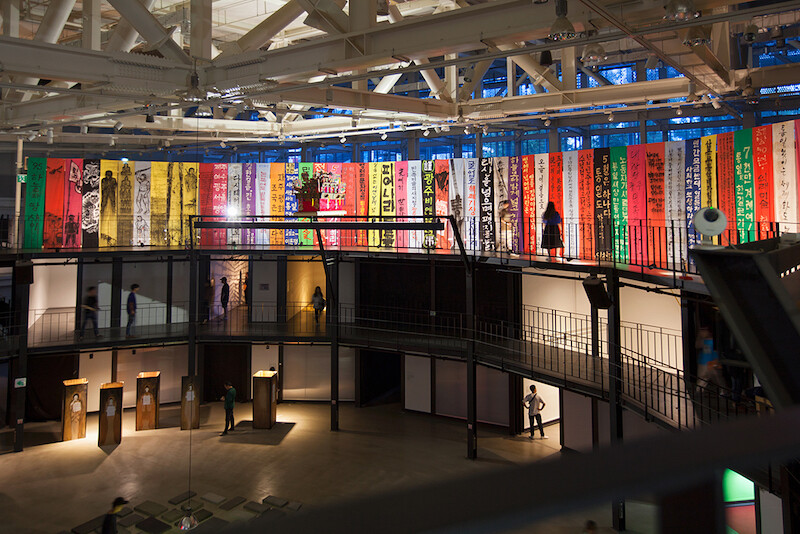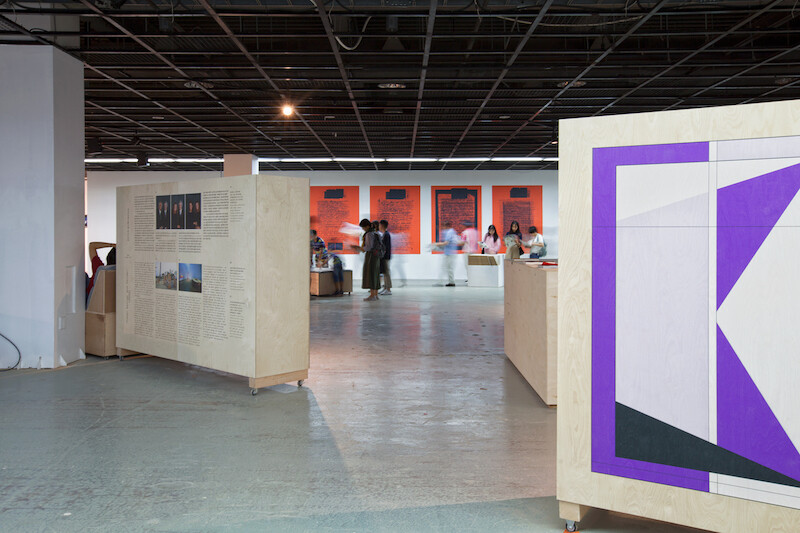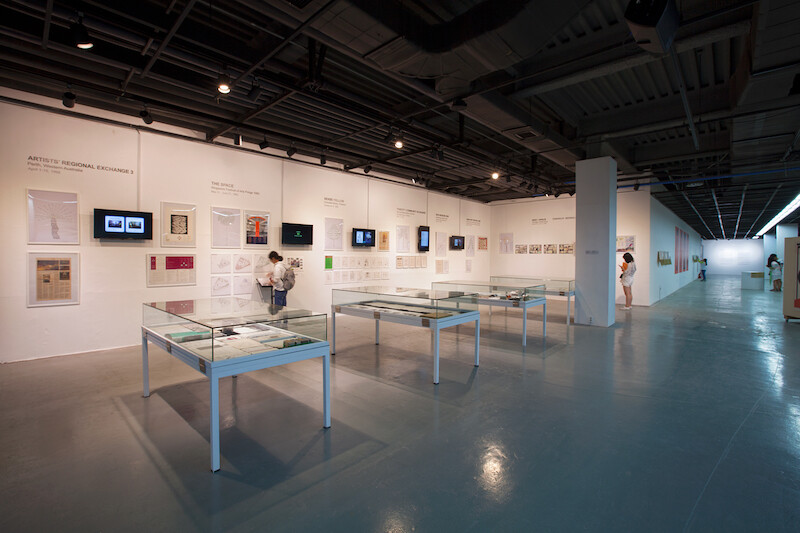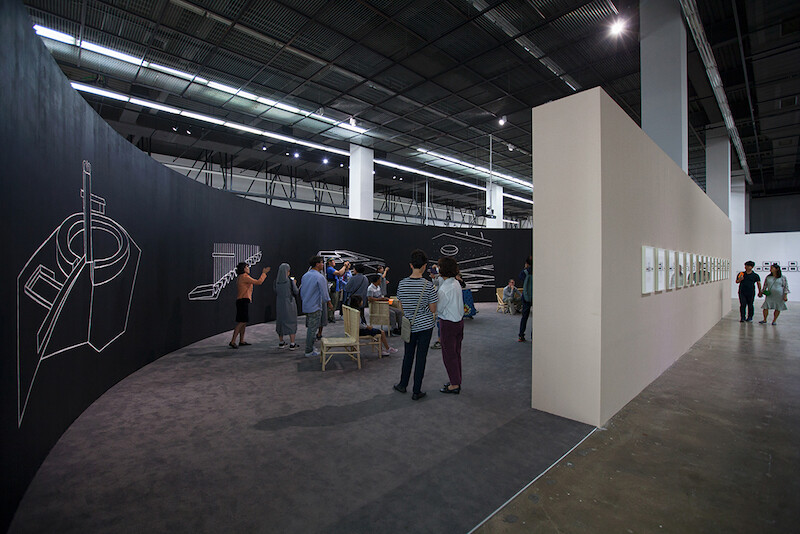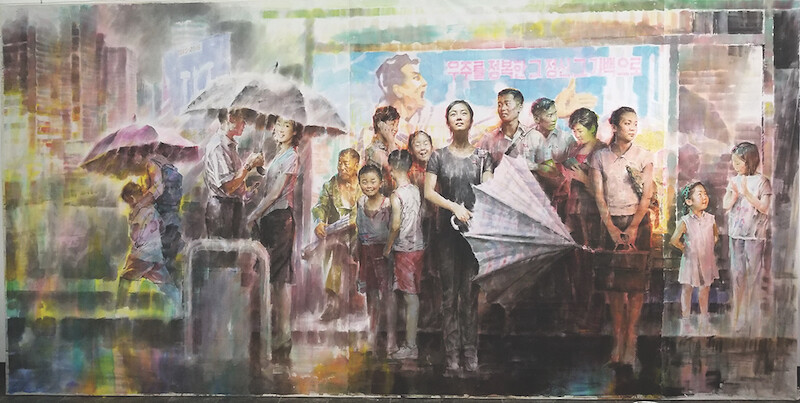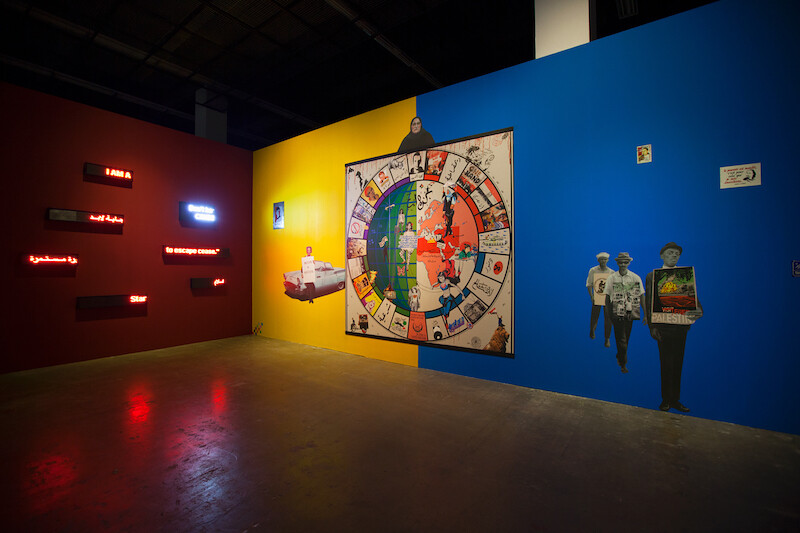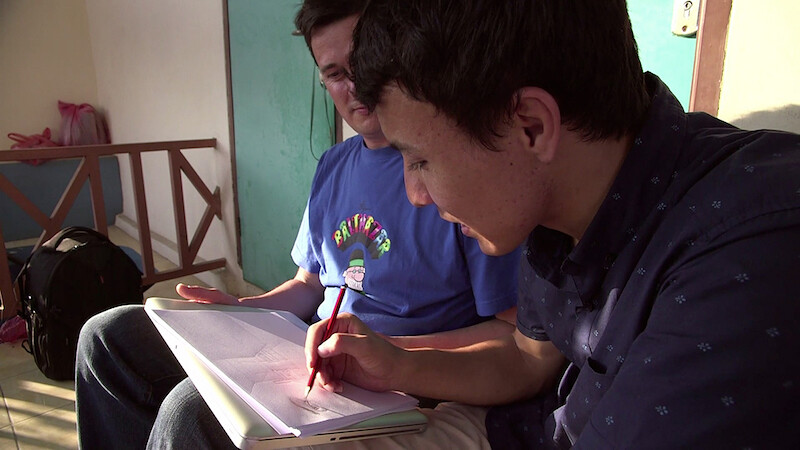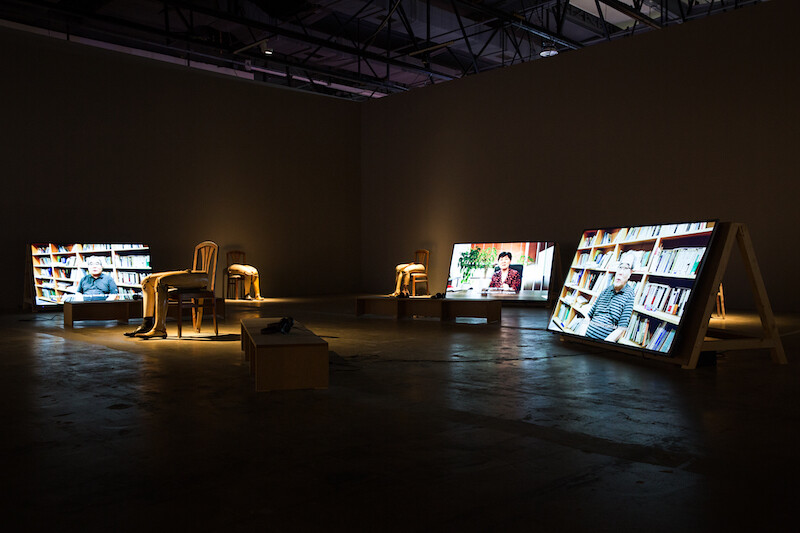September 7–November 11, 2018
What is art’s role when geopolitical tensions run high and technology makes it difficult—perhaps even irresponsible—to tune out of the perpetual state-of-emergency news cycle that promises, and often delivers, news that impacts the daily lives of people near and far. That’s a reasonable question on many curators’ minds when they are tasked with organizing a large-scale exhibition like a biennale. In Gwangju, the small Korean city’s well-respected biennale, currently in its 12th edition, was concerned with geopolitics from its inception, and the title of the inaugural exhibition was “Beyond the Borders.” It opened in 1995, amid great political change in the Korean government, and the Biennale itself was founded as a memorial to the May 18, 1980 student uprising, which took place in Gwangju. This year’s iteration reflected on that first exhibition, and reopened the theme of “borders” with the title “Imagined Borders.” In April this year, the US-North Korea Summit in Singapore began the discussion to end the war that has divided the Peninsula. And on the weekend of the Biennale’s opening, the South Korean President crossed the Korean Demilitarized Zone for the North’s Independence celebrations, making the exhibition’s title seem more and more like a speech act. However, the theme was interpreted by eleven curators in seven exhibitions, along with special commissions and pavilion projects, all of which allowed the idea of borders to take on a far more abstract register. In sum as well as in parts, “Imagined Borders” highlights how the impact of trauma from 73 years of separation and two wars will not be erased if and when the map changes.
This year, four exhibitions are installed in the Biennale’s sprawling main hall, and three in the newly built Asia Cultural Center (ACC). In the main hall, the exhibition opens with a more traditional, arguably conservative interpretation of the theme with Clara Kim’s focus on artists whose work addressed modernist architecture and its role in nation building. The standout work in Kim’s exhibition, titled “Imagined Nations/Modern Utopias,” was The Lost Voyage (2011–18), a 50-minute video by Hyun-Suk Seo in collaboration with Ahn Chang-Mo about Sewoon Sangga, a brutalist megastructure built in Seoul in 1968, and how contemporary history—war, dictatorship, and economic growth—impacted the way it has been seen and used by Korean society. The last exhibition in the main hall was titled “Returns” and organized by David Teh. His contribution came out of an invitation to conduct research in the Biennale’s archives and was thus retrospective, meant to function like a “walk-in magazine,” that was heavy on archival material from previous iterations of the Biennale. It included new artist commissions as well, but functioned less like an exhibition than a place for visitors to sit and reflect on the current edition with respect to the history of the Biennale since 1995.
Between those two bookends in the main hall, Rita Gonzalez and Christine Y. Kim and Rita Gonzalez’s “The Ends: The Politics of Participation in the Post-Internet Age,” looks at how the internet’s promise of freedom and open borders has played out unevenly throughout the globe. The show broadens the typical roster of artists associated with this topic with compelling, large-scale installations from newer voices, including Julia Weist and Nestor Siré who research and produce a range of multimedia related to internet access and the distribution of information in Cuba, and Kim Heecheon, whose video Every Smooth Thing through Mesher (2018) relates Pokemon Go to Instagram to Bitcoin through the form of casual Facetime conversations between friends. Over at the ACC is a whole exhibition of North Korean chosonhwa traditional painting, curated by art historian BG Muhn, who reflected on his eight years of research in the Democratic People’s Republic of Korea (DPRK) and how it challenged his South Korean anti-communist attitude and trepidation toward “the North.” Through a selection of works like the simple, solo portrait A Smelter at Rest (2015) by Ri Chol, in which a helmeted figure lifts a steaming bowl to his lips, or Kim Chol’s Tiger Dashing in Winter (2014), Munh’s selection highlighted the humanist and less straightforward themes that share a longer history and set of references with the South, alongside the message-driven elements popularly associated with DRPK art in general. This selection framed the 73-year separation within the span of a much longer history and deeper, shared human experiences, and offered an image of the DRPK alternative to its homogenous and controlled press coverage.
Back in the main hall, Gridthiya Gaweewong’s surprising and captivating exhibition, “Facing Phantom Borders,” interpreted and spun out from this edition’s main theme with attention on artists working in Asia. Gaweewong focuses on work that was scaled down to human-to-human, one-on-one relations, for the most part, over grand narratives. It includes Tom Nicholson’s uneven series of video interviews between the artist and 10 asylum seekers (installed with a diorama of cast figures), titled I was born in Indonesia (2017). Nicholson is transparent in the videos about his goal to influence policy concerning asylum seekers in his home country, Australia. In one video, addressing a young Afghan, he wants to know, “Why do you want to live in Australia?” to which the young asylum seeker answers, “I don’t, I want to live in a peaceful country.” The artist then invites the young man to ask him anything; the young man smiles and says: “What is it like to live in a peaceful country?” The question is so simple, so disarming, that the artist grapples to respond, unfortunately resorting to a script addressing his own privilege, laden with a subtext of guilt, instead of answering the question directly. Still, the exchange, and the work as a whole, size front-page political issues down to personal interactions and expose the vast inequities between people, made palpable on an emotional and uncomfortable level.
Gaweewong’s exhibition also includes Kader Attia’s Shifting Borders (2018), part of a new Biennale initiative of commissions by international artists. The unassuming, three-channel video installation runs over two hours and is arresting throughout. The space is darkened with theatrical spotlights illuminating chairs Attia took from another Biennale site, the Former Armed Forces’ Gwangju Hospital, with antique-looking, full-leg prostheses “sitting” on top. The legs are a recurring motif in Attia’s artwork, as his interest in the relationship between western and non-western societies—which is informed by his experience growing up and living between Paris and Algeria. Each part of the trilogy could be watched in any order and each monitor is equipped with headphones and a place for two people to sit at a time. Attia interviews shamans, researchers, art historians, psychiatrists, and survivors of state violence and/or personal trauma in South Korea and Vietnam, weaving together a mind-bending portrait of the region that not only crosses geographic boundaries (between the two countries) but also explores a range of threshold crossings: between the living and the non-living, the “hell in the mind” and the world outside, the idea of oppressed and oppressor, referring specifically to Korea’s relationship with the US (oppressed) and Vietnam (oppressor). The interviewees repeat across the three screens and each of their stories or expertise unfolds in nonlinear sequences as the artist managed to juggle and sort the single-camera, single-subject interviews that made up the bulk of the material, by interspersing them with each other and organizing them into several thematic threads.
Shifting Borders is an argument for that illusive and often pejorative term “artist research.” By connecting stories of trauma survivors, doctors, researchers, shamans, and ethnologists, Attia demonstrates how interdisciplinary approaches to healing rely on art and religion as much as science and historical understanding. In the video, Professor Ngo Duc Thinh, director of the Center for Research and Preservation of Vietnamese Cultural Faiths in Hanoi, notes that ritual ceremonies for healing require light, color, music, and lyrics, which, he says, “all combine and affect the psychology and physiology of the sick.” But just as each subject’s testimony was connecting the science behind the rituals with elements of faith and creating a picture of how the region’s cultures dealt with the traumatic legacy of colonization and war, and how it affects not just those who were victims or witnesses but whole societies into the present—the subjects also offered conflicting interpretations of history. For instance, one video opens with a young historian who speaks of colonialism and says: “Korean history is a destroyed history.” Later on, art historian Joan Kee notes that in Koreans’ self-portrayal as the oppressed, they fail to acknowledge how their experience relates to their own activities in Vietnam as US-allied troops, or how they discriminate against North Korean defectors. But the work wasn’t about assessing whose argument is stronger, as it all plays out in front of a stage set with prosthesis; trauma slowly emerges as a character among the cast, one that plagues the psyche like a phantom limb.
Shifting Borders is an expansive, historically informed, and cross-disciplinary portrait of the region that could only be crafted by an artist and a foreign agent. Like many works in “Imagined Borders,” it pierces through the neon lights on the energetic streets and the cartoons and smiling characters that adorn signs and product packaging. It also goes beyond the rigorous formality and emphasis on hospitality one experiences as a foreign art tourist in these spaces and takes you straight to the wounds, the anxieties, and the pain that persists from state violence and will persist regardless of the outcome of contemporary geopolitics.

